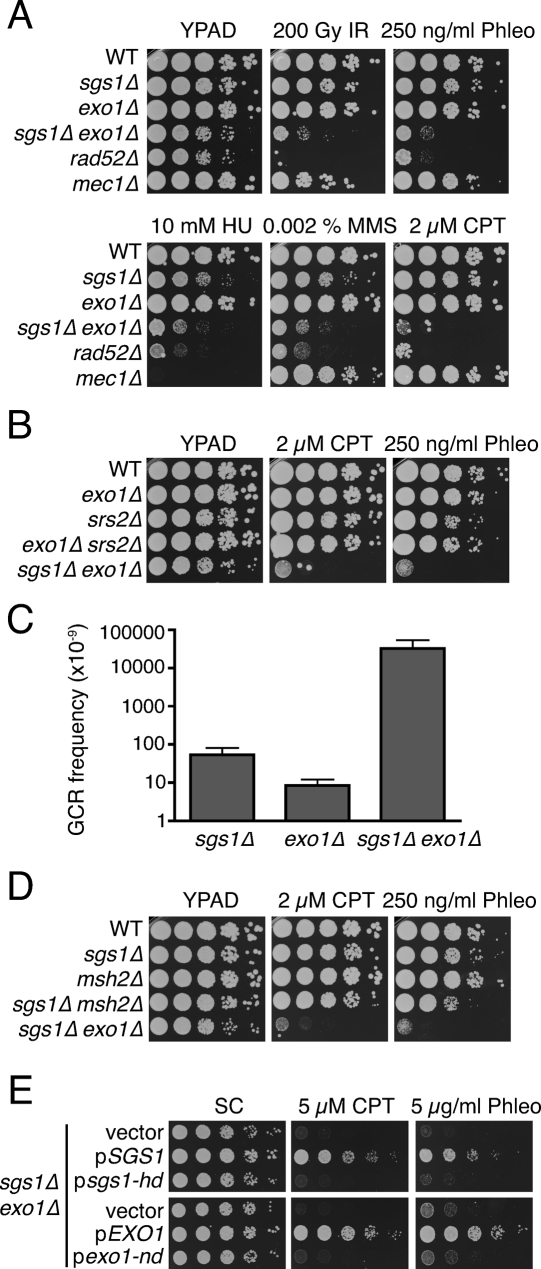Figure 1.
SGS1 and EXO1 are components of parallel pathways promoting resistance to DNA-damaging agents. (A) sgs1Δ exo1Δ double mutants are hypersensitive to DNA damaging agents. Tenfold serial dilutions of the indicated strains were treated with IR or were plated on media containing the indicated drug, then were incubated for 3 d at 30°C. (B) Srs2 is not required for resistance to DNA damaging agents in the absence of Exo1. Strains were treated as in A. (C) GCR frequency was measured for the indicated strains; the mean and standard deviation of two fluctuation tests are shown. (D) Inactivation of MMR does not sensitize sgs1Δ cells to DNA damaging agents. Analyses were as in A. (E) The catalytic activities of Sgs1 and Exo1 promote resistance to DNA damaging agents. sgs1Δ exo1Δ mutants were transformed with an empty vector, with a vector expressing the wild-type (pSGS1) or a helicase-deficient (psgs1-hd) version of Sgs1, or with a vector expressing the wild-type (pEXO1) or a nuclease-deficient (pexo1-nd) version of Exo1. Analyses were as in A.

